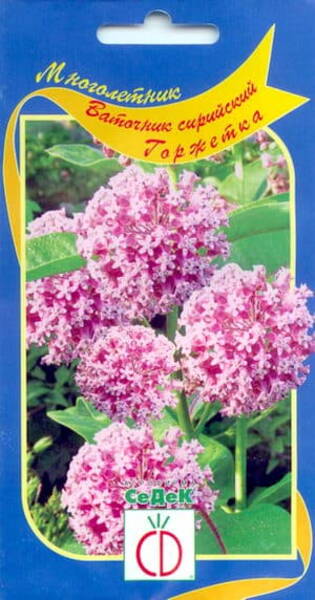Püsik. Hinnaline ja huvitav kultuurtaim. Ammustel aegadel kasutati taime seemnekarvu vati asendajana, selle varte kiudusid aga jämedate kangaste ja nööride valmistamiseks. Kiiresti kasvades, moodustab põõsa püstiste varte ja piklikelliptiliste lehtedega. Kuni 1 cm lillakasroosad, lõhnavad õied sarikates. On valguslembene, põuakindel, kasvab avatud aladel mistahes kultuuristatud mullal. Rühmadena murusse. Tärkamiseks optimaalne mullatemperatuur +23-25 kraadi. Külv kasti märtsis, aprillis. Külv avamaale mais. Istutusskeem 50x50 cm. Kõrgus kuni 100-150 cm. Õitseb juulis.
* Siidaskleepiat kasutati alguses nagu tehnilist kultuuri. Selle varre kiududest valmistati jämedakoelist riiet ja nööri, aga seemnetest vatti.
Kui tahate oma aeda meelitada rohkem mesilasi või teil on teod, istutage kindlasti aeda askleepias. See taim on suurepärane meetaim, sellelt kogutud mesi on suurepärase aroomiga. Ladinakeelne nimetus (Asclepias) viitab sellele, et taime kasutati ka ravimtaimena (kreeka keeles jumala ravim).
Tänapäeval on taim kuni meetri kõrguna,suurte lehtedega, sarikas on väikesed roosad õied, viiehõlmine õiekroon ja kasvatatakse dekoratiivtaimena. Taim õitseb suve teisel poolel kuu aja jooksul. See on vähenõudlik mullastiku suhtes, talub kuivust, eelistab avatud valgusküllast kasvukohta, kasvab kiiresti.
Taime paljundatakse ülaosast võetud pistikutega või mugula jagamisega kevadel. Sel juhul hakkab õitsema juba järgmisel aastal. Seemnetega paljundamine on meie kliimas keerulisem kuna seemned ei valmi alati.
Taim on parem istutada üksikult: see on küllalt agressiivse kasvuga ja parem, kui sellel pole kõrval teisi taimi. Kui te armastate head aroomi, istutage see istepingi kõrvale, see suur taim pakub ka varju võõra pilgu eest. See on kena peenra tagaosas, meelitab enda juurde liblikaid, kuid ärge istutage selle juurde madalaid taimi.
MULD: sobib igasugune muld, kuid eelistab viljakat kergelt happelist.
KASVUKOHT: kasvab hästi avatud kasvukohas. Talub hästi kuivust.

Potting of asclepias Grow these plants in sandy, humus rich, well-drained soil in a sunny spot. Asclepias incarnata grows best in wet, boggy soil. Asclepias curassavica, the Bloodflower, is native to tropical America. This plant should be grown in a minimum temperature of 60 degrees. It can also be treated as an annual by starting indoors and transplanting outdoors when the weather warms up, or it can be planted permanently outdoors in the far South. Asclepias physocarpa should be planted in a position that is protected against cold winds in cooler climates. When they are planted indoors, they should be potted in equal quantities of loam, peat and leaf mold. In the winter, the soil should be kept rather dry. The old shoots should be shortened in February, and as soon as the new ones are an inch or so high, the plants are repotted. The ends of the shoots should be pinched to encourage bushy growth.
Propagation of asclepias.
Seeds can be sown in the fall or spring in light, sandy soil in a cold frame or sheltered place outdoors. The plants can also be lifted and separated in the spring, but they shouldn t be disturbed unnecessarily because they usually do not bloom as well until they are established again. When they are grown indoors, cuttings, made from young shoots, can be inserted in pots of sandy peat and placed in a propagating case in the hothouse in March, or seeds can be planted at the same time.
Potting of asclepias.
Grow these plants in sandy, humus rich, well-drained soil in a sunny spot. Asclepias incarnata grows best in wet, boggy soil. Asclepias curassavica, the Bloodflower, is native to tropical America. This plant should be grown in a minimum temperature of 60 degrees. It can also be treated as an annual by starting indoors and transplanting outdoors when the weather warms up, or it can be planted permanently outdoors in the far South. Asclepias physocarpa should be planted in a position that is protected against cold winds in cooler climates. When they are planted indoors, they should be potted in equal quantities of loam, peat and leaf mold. In the winter, the soil should be kept rather dry. The old shoots should be shortened in February, and as soon as the new ones are an inch or so high, the plants are repotted. The ends of the shoots should be pinched to encourage bushy growth.

Eng.: Common milkweed, purple silkweed, common silkweed, cottonweed, silky swallowwort, Syrian milkweed, Syrian silkweed, virginia-silk, wild cotton. Suom.: Mesisilkkiyrtti. Sven.: Sidenört. Bot. syn.: Asclepias cornuti, Asclepias intermedia, Asclepias kansana.











